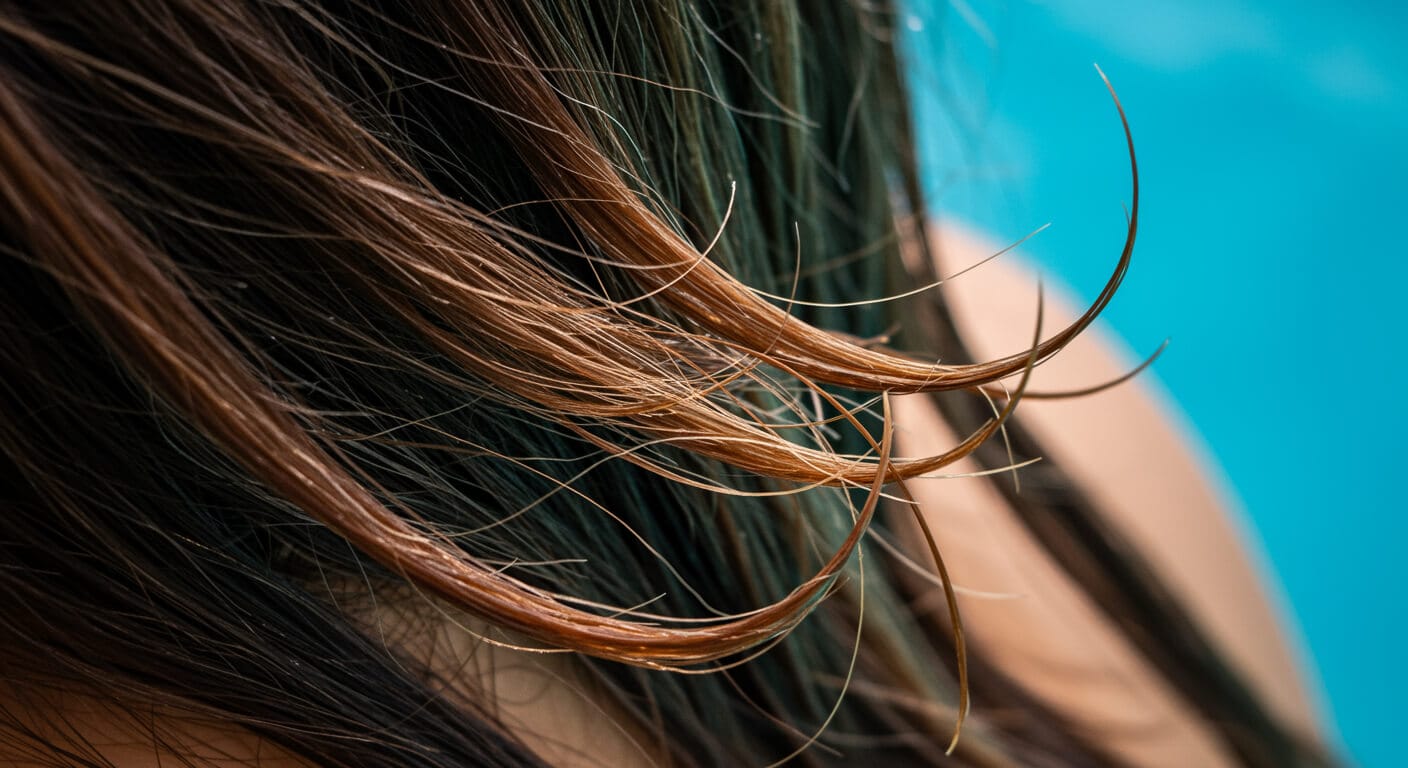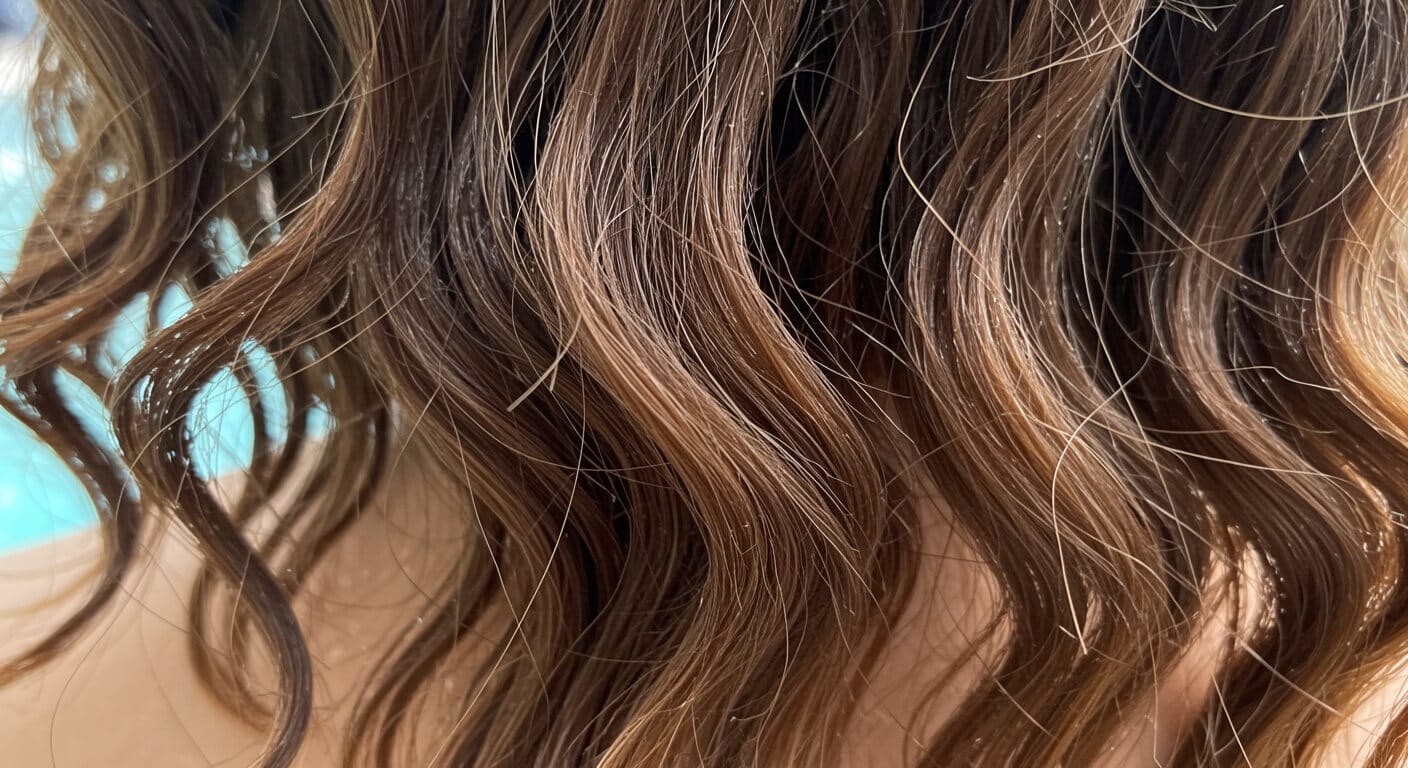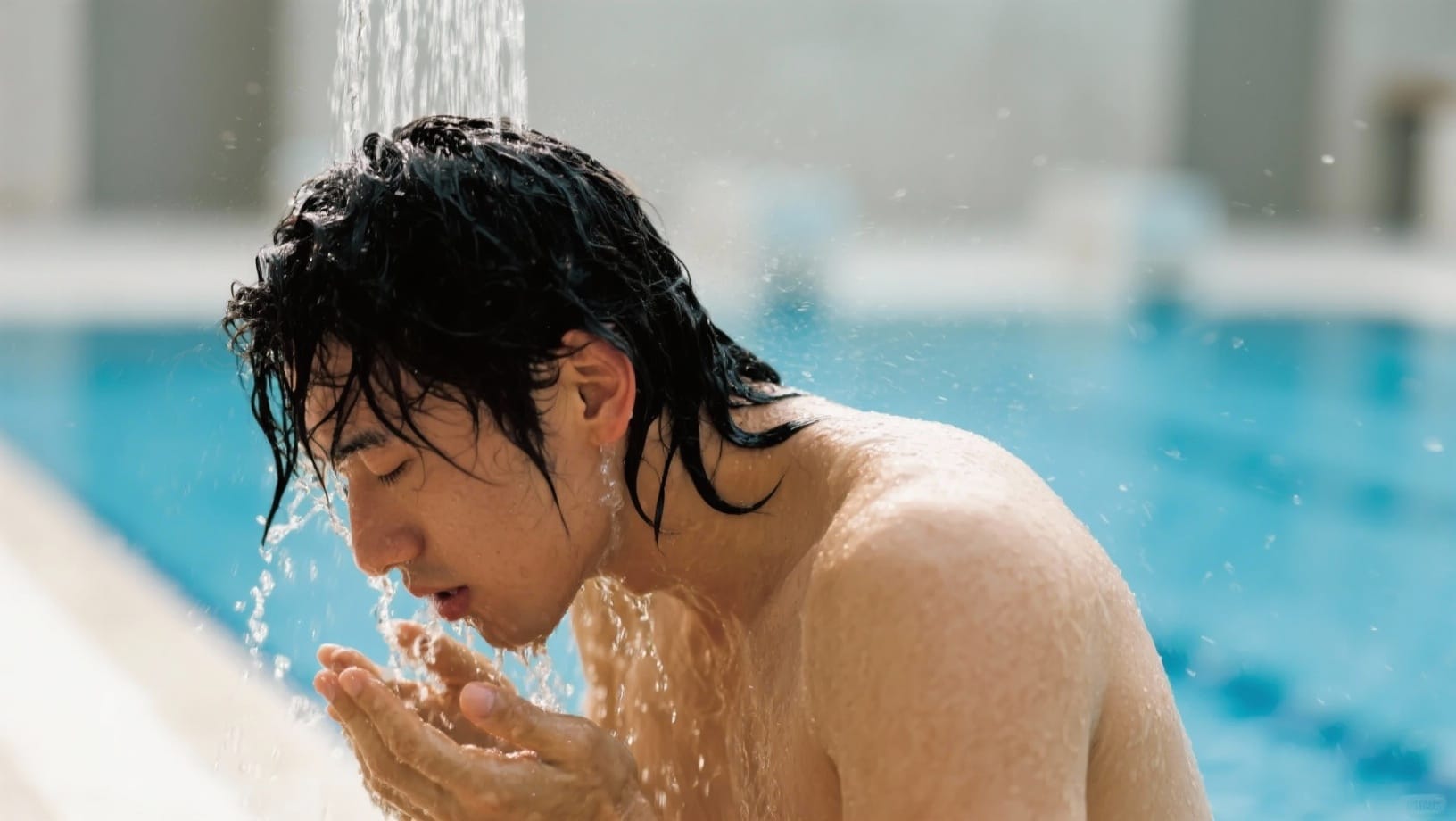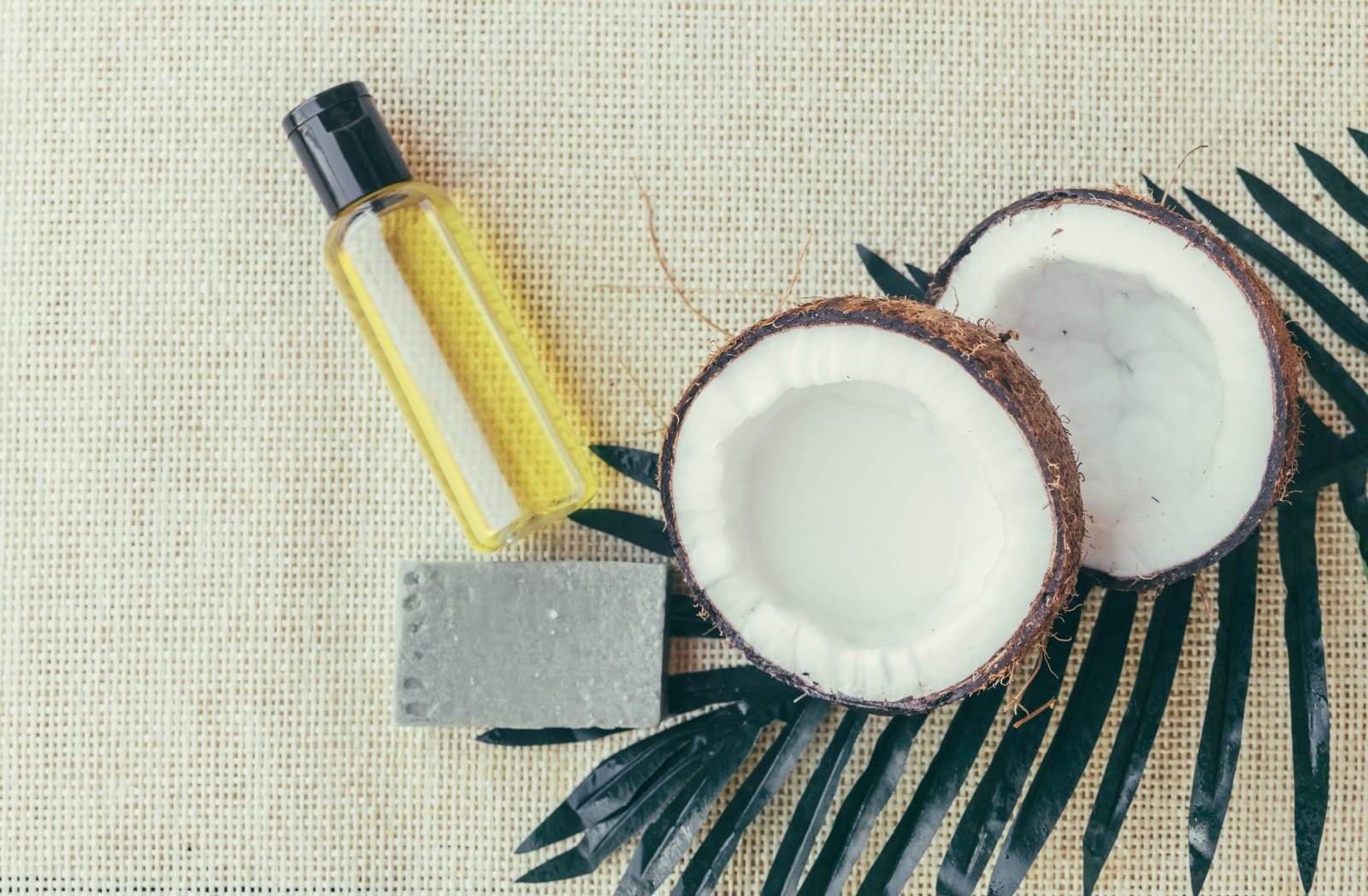How Long Can Chlorine Stay in Your Hair? The Truth About Residue and 7 Tips for Complete Removal

If you’ve ever stepped out of the pool with that unmistakable swimmer smell, brittle ends, or a straw-like texture in your hair, you’ve probably wondered: how long can chlorine actually stay in my hair? The truth is, what lingers isn’t pure chlorine, it’s something sneakier and nastier. Once chlorine mixes with the sweat, oils, and dead skin cells on your body, it forms chloramines, a compound that clings to your hair like glue.
These bonded chemicals are what cause the dryness, dullness, and breakage swimmers often struggle with. But here is the good news. You can stop the damage before it starts. In this guide, we’ll explain the science behind chloramine buildup, how long it really lasts, and share seven proven steps to remove every trace and protect your hair after swimming.
How Long Does Chloramine Residue Really Last?
To understand how long chlorine stays in your hair, it helps to know what you’re really dealing with.
Chlorine (Hypochlorous Acid) is the disinfectant added to pools to kill bacteria and viruses. It’s powerful but not inherently damaging unless it reacts with organic matter. When it does, it creates chloramines, also known as ‘combined chlorine.’
Chloramines are the real culprit behind that sharp “pool smell” and the rough, dry texture in your hair. These compounds don’t simply rinse out or evaporate once you leave the water. Instead, they bond chemically with the keratin proteins in your hair shaft and strip away the natural oils that protect it.

According to the Centers for Disease Control and Prevention (CDC), keeping pool water properly balanced is key to reducing chloramine buildup. These byproducts form when chlorine binds with organic materials in the water, and while good pool maintenance helps, small amounts can still develop and cling to your hair or skin after a swim. This is where maintaining a cleaner pool environment makes a difference. Advanced robotic pool cleaners can remove continuous organic debris, reducing the very fuel that creates chloramines and leading to healthier water for your hair and skin.
The American Academy of Dermatology (AAD) adds that chlorine exposure can weaken the protein structure in your hair, breaking down the bonds that keep it strong. Over time, this can lead to brittle ends and dullness. It can also strip away the natural oils from your skin and scalp, leaving them tight and dehydrated.
So, how long does the residue last? Until you wash it out correctly. Chloramines don’t simply fade overnight; they remain bound to your hair until neutralized or removed through proper cleansing and conditioning.
The Complete Chlorine Residue Removal and Hair Protection Plan
Here’s your definitive 7-step plan for keeping hair healthy and residue-free.
Pre-Swim Protection (Prevention Is Key)
Step 1. The Water Barrier
Before jumping in, rinse your hair with fresh, clean water. Hair strands act like sponges; when they’re already saturated with non-chlorinated water, they absorb far less pool water. A leave-in conditioner can achieve the same effect while offering a smooth base layer of protection.

Step 2. The Sealant Layer
Once your hair is damp, apply a thin layer of coconut or argan oil or a specialized leave-in conditioner. These create a light barrier on your hair cuticle that prevents chemical penetration and moisture loss.

Step 3. The Physical Barrier
A high-quality silicone swim cap is your strongest defense. Make sure it fully covers all strands and fits snugly. A little water may still seep in, but the barrier drastically limits chemical exposure.
Post-Swim Removal (Immediate Action)
Step 4. Immediate Rinse
As soon as you exit the pool, rinse your hair thoroughly with running water, ideally before you even shower. This step helps remove free chlorine and other loose residues before they bond to the hair shaft.
Step 5. Clarifying Wash
Use a swimmer’s shampoo or clarifying formula designed to neutralize chloramines and heavy metals like copper. Regular shampoos only clean surface dirt and oils; they don’t chemically break down bonded chlorine compounds.
Step 6. Acidic Neutralization
If your hair still feels coated or “squeaky,” mix a tablespoon of apple cider vinegar (ACV) with a cup of water and pour it over your hair after shampooing. The mild acidity helps rebalance pH, dissolve mineral buildup, and restore shine.
Recovery and Maintenance
Step 7. Deep Conditioning
After clarifying, your hair needs restoration. Apply a deep conditioner or protein mask to replenish moisture and rebuild the protective lipid layer stripped away by chloramines. Look for formulas with keratin, amino acids, or plant oils.
Repeat deep conditioning at least once a week if you swim regularly.
Common Misconceptions: Why Does My Hair Still Feel “Chlorinated”?
Even after washing, many swimmers report their hair still feels sticky, rough, or smells like the pool. Here’s why.
Myth 1: Regular Shampoo Is Enough
Most everyday shampoos cleanse surface oils but don’t neutralize chloramines. Without a targeted clarifying agent, the chemical bond remains, and so does the damage.
Myth 2: The Green Tint Comes from Chlorine
That greenish hue in blonde or light hair isn’t chlorine—it’s oxidized copper, often from algaecides or corroded plumbing. Chlorine only accelerates the process by opening your hair cuticle and allowing metals to attach more easily.
Myth 3: The Smell Will Fade Naturally
If your hair still smells like the pool a day later, it’s not just in your head. The odor means chloramine molecules are still present. Until you neutralize them, they’ll continue to dehydrate your strands and cause split ends.
Experts warn that leaving chloramines untreated can lead to chronic brittleness, color fading, and premature breakage, especially for chemically treated or porous hair. According to dermatologists, exposure to pool water over time can strip away protective oils and damage the outer cuticle layer that keeps hair flexible and glossy.
Hair Type-Specific Strategies for Swimmers
|
Hair Type |
Primary Concern |
Special Care Protocol |
|
Color-Treated / Highlighted Hair |
Color fading from oxidation |
Use a color-safe clarifying shampoo and a UV-protectant spray before swimming. |
|
Fine / Thin Hair |
Absorbs chemicals quickly; prone to limpness |
Stick to lightweight leave-ins; avoid heavy oils that flatten volume. |
|
Coarse / Curly Hair |
Prone to dryness and breakage |
Focus on deep conditioning and high-fat oils like shea or jojoba for moisture retention. |
For Daily or Competitive Swimmers:
Rotate your clarifying and moisturizing routine. Use a swimmer’s shampoo every 3–4 washes to avoid over-drying, and deep-condition at least twice weekly. Consider applying a small amount of oil and wearing a swim cap even for short sessions to minimize daily exposure.
Takeaway: How to Stop Chlorine Damage Before It Starts
So, how long does chlorine really stay in your hair before it starts dulling your shine and weakening your strands? The truth is, it all depends on your after-swim routine. Chlorine itself rinses off easily, but chloramines don’t. These stubborn compounds stay bonded to your hair until you actively remove them with the right cleansing and conditioning steps.
Remember the golden formula: Protect. Neutralize. Restore.
- Protect with water, oil, and a swim cap.
- Neutralize immediately with clarifying products and acidic rinses.
- Restore moisture through deep conditioning.
Don’t wait until your hair feels brittle to act. Whether you’re a casual swimmer or train daily, following these steps will keep your hair smooth, strong, and free from that stubborn pool smell.
And if you want to elevate your pool care from reactive to proactive, consider how you manage your water chemistry. While automatic pool cleaners reduce the organic debris that fuels chloramine production, the ultimate defense is maintaining perfect chemical balance.
Tools like the Aiper HydroComm empower you to do just that. Instead of guessing or relying on weekly manual tests, you can have 24/7 oversight of your pool’s health. By preventing the chemical imbalances that lead to hair and skin irritation in the first place, you spend less time worrying about residue and more time enjoying a perfectly safe and clean swim.
Frequently Asked Questions About Chlorine and Hair Damage
Here are the answers to the most common questions swimmers have about protecting their hair from chlorine and reversing the damage.
Q: What happens if you don't wash chlorine out of your hair?
A: If you fail to wash chlorine out, the chemical compounds (chloramines) remain bonded to your hair. This leads to progressive damage, stripping away natural oils and breaking down proteins. Your hair will become increasingly dry, brittle, and prone to split ends and breakage. You may also experience scalp irritation and a lingering "pool" odor.
Q: Is it okay to leave chlorine in your hair overnight?
A: No, you should never leave chlorine in your hair overnight. This maximizes the exposure time, allowing the chemicals to inflict the most damage. Leaving it in will severely dehydrate your hair and weaken its structure, making it much harder to repair. Always rinse and wash your hair as soon as possible after swimming.
Q: Does regular shampoo remove chlorine?
A: Most regular shampoos are not effective at removing chlorine. They are designed to cleanse dirt and oil but cannot break the chemical bonds that chloramines form with your hair. To properly remove the residue, you need to use a specially formulated swimmer's shampoo or a clarifying shampoo.
Q: Does apple cider vinegar remove chlorine from hair?
A: Yes, an apple cider vinegar (ACV) rinse is an effective home remedy. The mild acidity of ACV helps to neutralize and dissolve chlorine and mineral residue. It also helps to close and seal the hair cuticle, which restores shine and brings your hair's pH level back into balance.
Q: Can coconut oil protect hair from chlorine?
A: Yes, coconut oil is an excellent pre-swim treatment. Applying a light coating to damp hair before you get in the pool creates a protective, water-repellent barrier. This seal minimizes how much chlorinated water your hair can absorb, significantly reducing potential damage.
Q: Why does my hair still feel bad after I wash it?
A: If your hair still feels rough, gummy, or dry after washing, it's likely because either 1) the chloramine residue wasn't fully removed by your shampoo, or 2) the clarifying process has stripped away its natural protective oils. The solution is to ensure you're using a proper clarifying shampoo, and always follow it with a rich, deep conditioning treatment to restore moisture.

